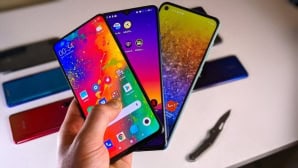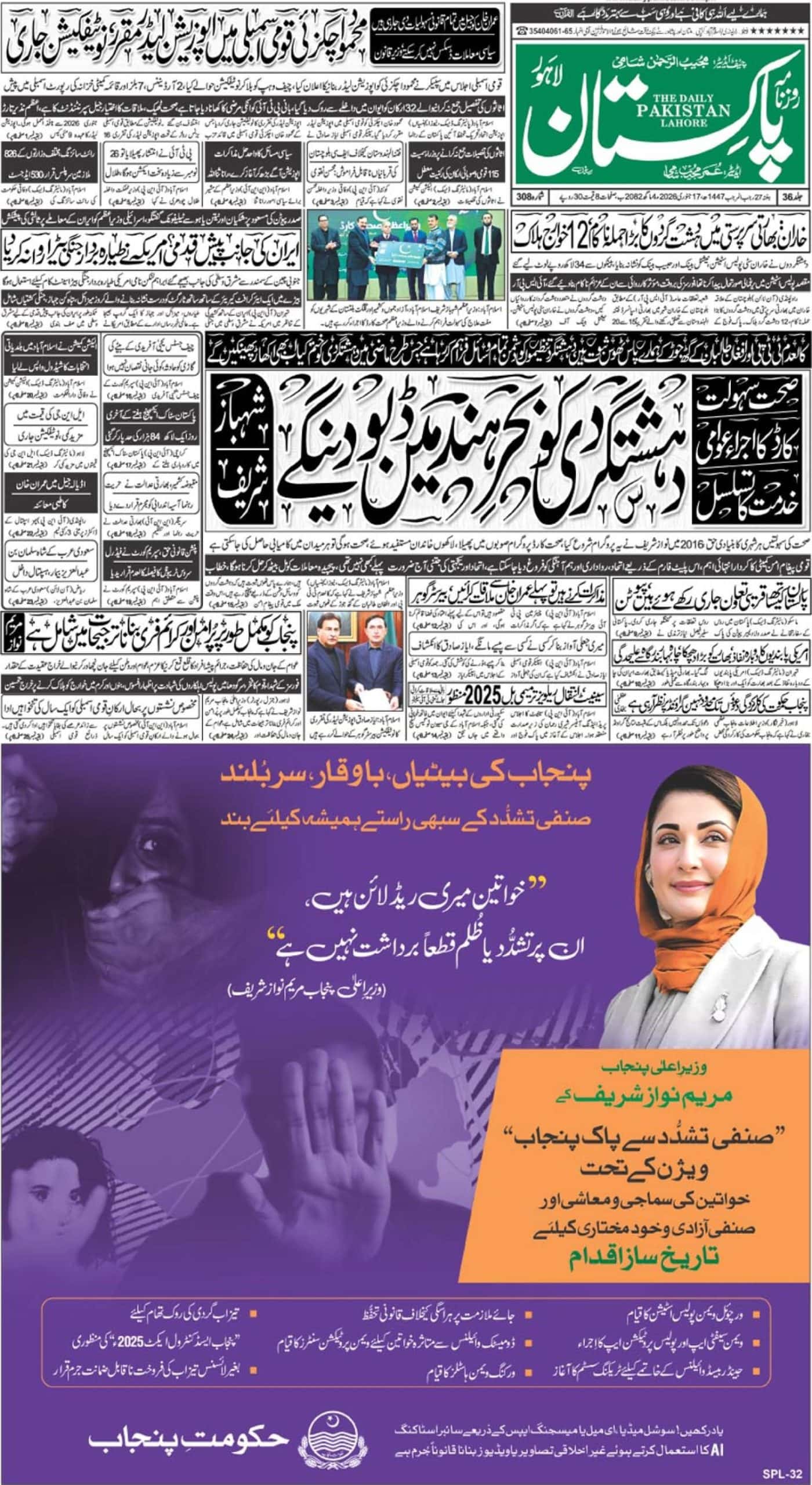LAHORE – vivo has solidified its position in the industry as a brand in constant pursuit of innovations, with a driving philosophy of ‘BENFEN, which encourages doing the right things in the right way to create value for society.
The brand has taken significant strides with a strong purpose to connect people and communities. Following this legacy, vivo has also been a trailblazer in advancing 5G technology and application to enhance customer experience.
Moreover, the brand has also been deeply involved in the Research & Development efforts for 6G technology and released its third 6G white paper last year.
To gain an in-depth understanding of 5G technology, and the opportunities it entails for Pakistan and vivo’s developments, Sarfraz Ali from DailyPakistan interviewed Rakesh Tamrakar, a 5G Standard Expert, at vivo.
Our interaction with Mr Rakesh Tamrakar proves to be a great opportunity to learn more about wireless technology, industry trends and the brand’s latest developments.
Q.1 Can you explain some of the key differences between 5G technology and previous generations of wireless technology (3G and 4G), and how these differences will impact Pakistan’s telecommunications industry?
Speaking of the difference first, 5G is not merely an optimization of 3G/4G, it also incorporates many breakthrough technologies to support reliable communication, like the utilization of millimetre wave spectrum, and MIMO technology. 5G supports an extensive range of frequency bands with very wide bandwidths, to provide support to services such as eMBB (enhanced mobile broadband), URLLC (ultra-reliable low latency communication), and mMTC (massive machine type communication). Compared to the previous generations, 5G increases flux and connection density as well.
As for its impact on Pakistan’s telecommunications industry, it will be a revolutionary technology that will enable the creation of a new kind of digital infrastructure and facilitate virtual connectivity via peak data transmission speeds and minimal latency. This will culminate in higher efficiency and optimized performance, empowering innovative user experiences.
Further, its utility will not be limited to only smartphones, we’ll also see significant industry applications of 5G in areas such as education, healthcare, industry, infrastructure, entertainment, public services, environment monitoring, autonomous driving, and UAV (unmanned aerial vehicle) communication. These innovations will not be limited to specific sectors but will prove to be global game-changers at both, the industrial and the consumer levels.
Additionally, 5G will boost integration across industries and set the foundation stone for establishing smart cities supported by comprehensive internet-of-things (IoT) technologies that can efficiently restructure our living environments and redefine our everyday lives.
We’re pleased about the fact that vivo, as one of the leading smartphone makers, is an instrumental contributor in the formation of the 5G technical standards.
Q.2 What are some of the specific challenges and opportunities that vivo anticipates about 6G adoption in Pakistan? How is the company working to overcome these challenges and ensure a smooth transition to the next generation of wireless technology?
6G is now in the ideation phase and we have a long and exciting journey ahead of us to shape its course and eventually conceive it. Currently, academia and industries are collaborating to define visions and goals concerning 6G and to research technologies that will assist in its conception. It will be an intricate system, capable of supporting numerous applications and deployment scenarios. Therefore, it will require a whole range of technological innovations, from new network functionalities to new air interface technologies, as well as further development of the existing technological infrastructure. The key focus will be assigned to keep the system design flexible and simple to operate. Tentatively, standardization of 6G mobile technology could start in 2025 and it shall be ready for deployment by 2030.
With the vision of ‘Bringing you a boundless, intelligent world’, vivo is committed to providing consumers with an outstanding experience of smartphone products and connection services. To achieve that, vivo will collaborate closely with industry leaders and partners to enable future application scenarios, reach consensus on 6G requirements, and continue the exploration and development of key enabling technologies of 6G.
Currently, vivo has 4 key research orientations in 6G: OVTDM, OTFS, RIS and cell free. We are also working on technologies that will enable 6G development, including AI + Communications, Backscatter, THZ, holographic MIMO, etc. Besides, vivo is currently the only device manufacturer that has participated in “6G Overall Research Topic”, a major research project conducted by the Ministry of Science and Technology in China.
Q.3 What role do you think 5G technology will play in transforming the way businesses operate? What advantages consumers can expect in terms of faster internet speed and enhanced connectivity?
5G will undoubtedly have countless applications at both the industrial and consumer levels. For tech-savvy individuals accustomed to heavy device usage loads, 5G will be a game changer, and elevate their digital devices into powerful cloud-synced gateways, capable of tapping into the most resource-intensive applications and data streams.
Many industries are currently undergoing a paradigm shift as businesses and countries race to usher society into the next phase of technological transformation. The pandemic has reformed the world in an unprecedented way – consumers and industries are fast-tracking a digital revolution in an era of social distancing and remote work. The time is ripe for many commercialized products and services to take advantage of the unparalleled high-speed connectivity and minimal latency enabled by 5G.
Q.4 Can you explain how vivo is making 5G connectivity more accessible and affordable for consumers in Pakistan?
As a leading smartphone company with in-depth R&D capabilities, vivo is dedicated to accelerating the empowerment of consumers en-masse by designing cutting-edge 5G smartphones that are available at every price point. vivo’s strong R&D network across nine innovation centres and research teams across the world is playing a crucial role to achieve this ambitious goal and make this adoption easy.
Q.5 Can you describe vivo’s approach to providing 5G products at different price ranges? How is the company working to make this advancement accessible to a diverse range of consumers?
vivo is driven by the dedication to popularize and democratize the powerful capabilities of 5G for the masses and strives to bridge users with the digital world by heavily contributing to 5G technology in the industry. We are working towards making 5G devices more accessible and affordable and have released over 20 models of 5G devices covering different price ranges. vivo’s 5G smartphone product line-ups have a broad spectrum of applications, ranging from professional photography, and high performance, to e-sports, to serve the needs of various kinds of users around the world.
Q.6 Does vivo as a consumer-centric brand incorporate customers’ insights while developing connectivity-focused technologies?
Having amassed over 400 million consumers, vivo has a deep understanding of evolving consumer demands. Our prime focus continues to be towards the latest innovations in hardware design as well as software ecosystems to improve terminal performance and enhance user experiences. As a result, we are investing heavily in 5G connectivity, to reach the stage of product realization and empower consumers with this technology. Brought to life by our strong R&D network across the globe, vivo’s unique user-oriented innovation is the genesis behind its numerous patented contributions to the 5G standard, many of which have been universally acclaimed by the 3GPP collective and are currently being adapted by everyday smartphone users.
One of the most notable contributions by vivo includes the standardization and performance enhancement of Rel-17 multi-SIM technology. Previously, an incoming voice call from one competing 5G SIM card would interrupt the data flow of the other, resulting in abysmal performance as one would cancel the other. Having discovered early that consumers prefer 5G smartphones with dual-SIM card slots for greater flexibility in different usage scenarios, vivo researchers successfully sought to negate the clash, leading to the existence of multi-SIM 5G smartphones on the market today. Additionally, vivo underwent an algorithm and system optimization to facilitate this technology, combined with 120-watt fast charging to ensure complete user satisfaction with their devices.
Several vivo smartphone models are also equipped with a superconducting carbon fibre liquid cooling system to prevent device overheating, which is especially prevalent during intensive multimedia entertainment or e-sports usage scenarios enabled by 5G.
Another issue that came with the advent of 5G technology was the increasing number of antennas and components that were required to be installed inside a smartphone to support it. Knowing how users around the world have developed an affinity for ultra-thin smartphones, posed a substantial challenge. Never one to disappoint, vivo developed its proprietary 3D stack design which uniquely encases the industry-leading technologies and allows new 5G smartphones to be even slimmer than their 4G predecessors.
Q.7 As one of the early trailblazers in 6G research and development, can you discuss vivo’s long-term vision for 6G technology in Pakistan to drive innovation and growth in key industries and sectors?
vivo is part of a few manufacturers that hold extensive expertise and an in-depth understanding of consumer needs required to turn the vision of 6G connectivity into a reality. To kickstart this exciting new era, the vivo Communications Research Institute released its third 6G white paper titled, “Building a Freely Connected Physical and Digital Integrated World: 6G Services, Capabilities and Enabling Technologies” on July 27, 2022, which outlines vivo’s vision for 6G. A salient aspect of this paper was that 6G will enable the convergence of the digital and physical worlds.
Providing a diverse set of hypothetical scenarios and case studies, vivo communication experts analyzed how the sixth generation will embody much more than technological transformation, and merge our physical and digital worlds. An integrated 6G network will not only connect humans to humans but will also connect humans to machines and machines to machines. And we hope that every aspect of our lives will be connected through the 6G system.














